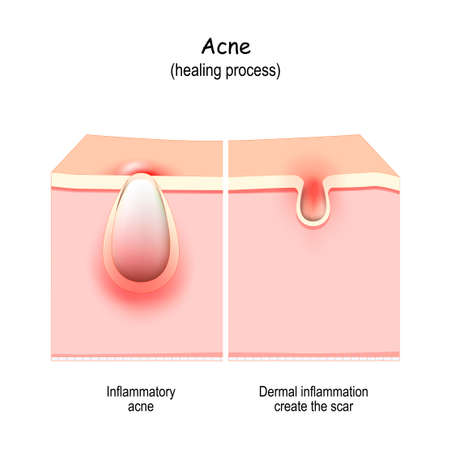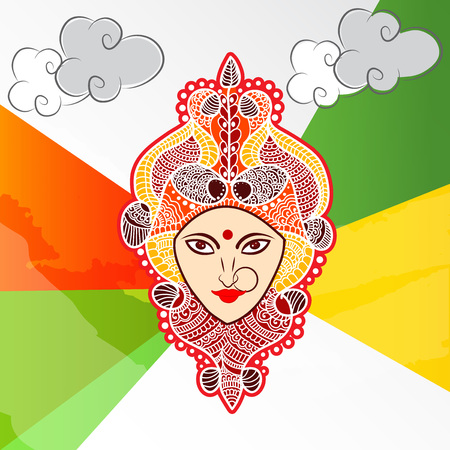Introduction: The Growing Popularity of Medical Cosmetics in India
In recent years, India has witnessed a remarkable surge in the demand for medical cosmetic procedures among both men and women. This shift is not just about vanity—its about confidence, social acceptance, and personal well-being. The powerful influence of Bollywood celebrities flaunting flawless skin and sculpted features on social media platforms has played a significant role in shaping beauty ideals across urban and even semi-urban areas. As Indians increasingly aspire to achieve these standards, clinics offering treatments like botox, fillers, laser therapies, and advanced skin rejuvenation have mushroomed in cities like Mumbai, Delhi, Bengaluru, and Hyderabad. Beyond celebrity culture, changing societal attitudes towards self-care and appearance are also fuelling this trend. Where once cosmetic enhancements were whispered about with stigma or considered a privilege of the wealthy, today they are openly discussed at parties, workplaces, and even family gatherings. Many Indians now view these procedures as routine investments in their personal grooming—no different from visiting a salon or gym. With this growing acceptance comes curiosity—and concern—about the long-term effects of such treatments. Are these procedures truly safe? Do they deliver on their promises over time? Or are some popular beliefs simply myths that need to be debunked? In this article series, we will explore these questions in depth, focusing specifically on the Indian context and separating fact from fiction regarding the long-term impacts of medical cosmetic procedures.
2. Common Myths about Long-Term Effects
In India, the long-term effects of medical cosmetic procedures are often shrouded in misconceptions and incomplete information. Many people tend to believe stories heard from friends or seen on social media rather than relying on facts provided by certified professionals. This has led to widespread myths that not only deter individuals from seeking professional advice but also fuel unnecessary fears regarding results, side effects, and social acceptance.
Highlighting Widespread Misconceptions
Let us address some of the most prevalent myths encountered across Indian cities and towns:
| Myth | Common Belief | Reality |
|---|---|---|
| Results Are Permanent and Unchanging | “Once you undergo a procedure, your appearance will stay the same forever.” | The effects of most cosmetic procedures fade with time. Maintenance or repeat sessions may be required for lasting results. |
| Procedures Cause Serious Health Issues in the Long Run | “You will develop health complications years after treatment.” | Most certified treatments have minimal risks when performed by qualified professionals; side effects are generally mild and manageable. |
| Treatments Always Look Fake or Unnatural | “Everyone can tell if you’ve had work done.” | Modern techniques focus on subtle enhancements, often undetectable to others when performed skillfully. |
| Social Stigma Is Inevitable | “People will judge me if they know I had a cosmetic procedure.” | While some stigma exists, increasing awareness and acceptance are making it more common among urban Indians, especially in metros like Mumbai and Delhi. |
| No Downtime Means No Risk at All | “If theres no recovery period, there cant be any side effects.” | Even non-invasive procedures can have temporary side effects like redness or swelling; its important to follow post-care instructions. |
The Role of Social Perceptions in India
The influence of Bollywood celebrities and social media influencers often sets unrealistic standards and spreads half-truths. In smaller cities and rural areas, conversations around cosmetic treatments may still be taboo, adding to the belief that such procedures are unsafe or socially unacceptable. However, with growing exposure and improved education, these myths are gradually being replaced by a more informed outlook.

3. Evidence-Based Facts: What Science and Indian Experts Say
When discussing the long-term effects of medical cosmetic procedures in India, it is crucial to move beyond hearsay and focus on scientific evidence and insights from local experts. According to leading Indian dermatologists and plastic surgeons, popular treatments such as laser therapies, Botox injections, and dermal fillers have been extensively studied in both global and Indian contexts.
Laser Treatments: Safety and Efficacy in Indian Skin Types
Indian skin differs from lighter skin types in terms of melanin content and sensitivity. Research published by AIIMS and supported by Dr. Rashmi Shetty, a renowned cosmetic dermatologist in Mumbai, confirms that modern lasers, when administered by qualified professionals, are safe for Indian skin. Long-term studies show minimal risk of permanent pigmentation or scarring when the correct technology is used with proper settings. However, improper use or untrained hands can lead to complications such as hyperpigmentation—a fact stressed by many Indian doctors.
Botox: Myths about Permanent Damage
The myth that Botox causes irreversible muscle paralysis or facial distortion is widely prevalent. However, Dr. Anil Tibrewala, a board-certified plastic surgeon from Mumbai, clarifies that Botox’s effects are temporary, usually lasting 4-6 months. Repeated use over years does not cause muscle atrophy or chronic weakness if performed within recommended dosages. Peer-reviewed studies from Indian journals also support this view, showing no significant long-term adverse effects among regular users.
Fillers: Longevity and Reversibility
Hyaluronic acid-based fillers are another popular choice in metropolitan cities like Delhi and Bangalore. Indian aesthetic specialists point out that these fillers are biodegradable and reversible using hyaluronidase enzyme if needed. Concerns about lumps or unnatural appearance are largely attributed to poor technique rather than the product itself. Long-term data gathered from Indian clinics suggests that most patients experience satisfactory results with rare instances of chronic complications when treated by experienced practitioners.
In summary, evidence from Indian medical literature and expert consensus clearly indicates that with proper technique, patient selection, and quality products, the long-term risks of these procedures remain minimal for the majority of Indian patients. The key lies in consulting certified professionals who understand the unique characteristics of Indian skin and aesthetics.
4. Cultural and Lifestyle Influences on Procedural Outcomes
When considering the long-term effects of medical cosmetic procedures in India, it is essential to acknowledge how cultural and lifestyle factors unique to our country play a significant role in procedural outcomes. Indian skin types, diverse climatic conditions, and traditional beauty practices collectively shape both the results and longevity of these treatments.
Indian Skin Types: Unique Characteristics and Implications
Most Indians have skin types that range from Type IV to VI on the Fitzpatrick scale, which means higher melanin content compared to Western counterparts. This increased melanin offers some natural protection against UV rays but also makes Indian skin more prone to pigmentation issues such as post-inflammatory hyperpigmentation (PIH) after cosmetic procedures. Understanding this difference is crucial for both patients and practitioners, as certain lasers or chemical peels can trigger unwanted side effects if not tailored to Indian skin requirements.
Comparison Table: Common Procedures and Their Effects on Indian Skin Types
| Procedure | Potential Long-Term Benefit | Possible Risk for Indian Skin |
|---|---|---|
| Laser Hair Removal | Reduced hair growth | PIH, burns if incorrect laser used |
| Chemical Peels | Smoother texture, reduced pigmentation | Hyperpigmentation, uneven results |
| Dermal Fillers | Youthful appearance, contouring | Nodules or lumps if not skillfully injected |
| Botox | Smoother lines, lifted brows | Bruising or asymmetry (rare) |
Climatic Considerations: The Indian Environment Factor
The hot and humid climate in most parts of India can affect recovery and final results after medical cosmetic procedures. Excessive sweating may increase infection risk after certain treatments, while high UV exposure can worsen pigmentation issues if proper sun protection is not practiced religiously. Monsoon humidity might delay healing time or cause breakouts post-procedure, making aftercare compliance absolutely critical for Indians seeking long-term benefits.
Traditional Beauty Practices: A Double-Edged Sword?
India’s rich tradition of using herbal remedies and home treatments like turmeric masks or oil massages can interact with modern aesthetic procedures. While these practices have their own merits, some ingredients may irritate freshly treated skin or interfere with healing—for example, applying lemon juice post-peel could worsen sensitivity or cause burns. It is vital to communicate all ongoing traditional routines to your dermatologist before undergoing any cosmetic intervention.
Key Takeaway for Indian Patients
The interplay between skin biology, climate, and age-old beauty customs means that outcomes from medical cosmetic procedures in India are unique. For optimal long-term results, consult a provider experienced with Indian skin and lifestyle realities, follow tailored aftercare protocols, and be transparent about your use of traditional products. This holistic approach can help debunk myths and ensure you reap the true benefits of modern aesthetics in the Indian context.
5. Regulatory Landscape and Safety in the Indian Context
Indias beauty and wellness industry has witnessed a massive boom over the last decade, with medical cosmetic procedures becoming increasingly popular among urban and semi-urban populations. However, this rapid growth has also brought challenges, particularly concerning regulatory oversight and patient safety.
Overview of Indian Health Regulations
The regulatory framework for medical cosmetic procedures in India falls under several authorities, including the Medical Council of India (MCI), State Medical Councils, and the Drugs Controller General of India (DCGI). While dermatologists and plastic surgeons are required to be registered with recognized medical bodies, there is no exclusive law governing aesthetic medicine as a separate specialty. This regulatory gap sometimes leads to ambiguity in accountability and standards, especially with newer non-surgical treatments like fillers or laser therapies.
The Rise of Unlicensed Clinics
One alarming trend is the proliferation of unlicensed clinics and practitioners offering “quick-fix” cosmetic solutions at much lower prices than established hospitals or reputed clinics. These setups often operate without certified doctors, proper hygiene protocols, or adequate equipment. Many such clinics advertise aggressively on social media, luring young Indians with promises of instant results. Unfortunately, these shortcuts can lead to severe complications, ranging from infections and scarring to long-term skin damage and health risks.
How Consumers Can Safeguard Against Risks
Given this environment, it becomes essential for consumers to make informed choices. Before undergoing any procedure, always verify that the clinic is registered with local health authorities and that the practitioner holds an accredited medical degree in dermatology or plastic surgery. Do not hesitate to ask for credentials or proof of previous work. Check for sterilization practices and read online reviews from genuine patients. If possible, consult more than one professional before making a decision. Lastly, remember that genuine experts will never rush you into a treatment or offer unrealistic guarantees; your safety should always come first.
6. Social Perceptions: Navigating Societal Expectations and Judgements
In India, the decision to undergo medical cosmetic procedures is often influenced not just by personal aspirations but by the strong presence of family, social circles, and workplace culture. The long-term effects of these procedures are weighed against a backdrop of traditional values and evolving modernity, leading to a unique set of societal expectations and judgements.
Family Attitudes: Balancing Tradition and Modernity
Indian families are traditionally close-knit, with elders playing a significant role in major life decisions. Opting for cosmetic enhancements can be met with concern or skepticism, especially among older generations who may associate such choices with vanity or western influence. Family members often worry about the perceived long-term impact on marriage prospects, health, or even spiritual well-being. However, younger family members, particularly in urban areas, show increasing acceptance as global beauty trends permeate Indian society.
Social Circles: The Double-Edged Sword of Peer Influence
Among friends and acquaintances, opinions on cosmetic procedures can range from admiration to criticism. On one hand, successful outcomes are sometimes celebrated and spark curiosity, while on the other hand, visible changes can lead to gossip or subtle social exclusion. Myths about unnatural results or “addiction” to cosmetic treatments persist in many circles, reinforcing stigma around those who choose such interventions.
Workplace Perspectives: Professional Image and Biases
The Indian workplace is gradually becoming more cosmopolitan, but biases still exist. Some believe that enhancing one’s appearance through medical procedures can boost confidence and improve professional opportunities—especially in industries like hospitality or media. Others view it as unnecessary or even deceptive. Long-term repercussions are often exaggerated; concerns about side effects or artificial looks may impact perceptions during hiring or promotions. Nonetheless, as awareness grows and more professionals opt for subtle enhancements, attitudes are slowly shifting towards acceptance.
Overall, navigating the complex terrain of societal expectations in India requires individuals to balance personal desires with collective opinions. Dispelling myths about long-term consequences relies not only on medical evidence but also on open conversations within families, friend groups, and workplaces. As India continues to modernise, understanding these nuanced perceptions is crucial for anyone considering a medical cosmetic procedure.
7. Informed Decisions: Tips for Potential Clients in India
When considering medical cosmetic procedures in India, making an informed decision is crucial to ensure your safety and long-term satisfaction. The Indian market is growing rapidly, with a mix of reputed clinics and less-regulated establishments. Here are some practical tips to help you separate myths from facts and choose wisely.
Vet the Clinic Thoroughly
Before booking any procedure, research the clinic’s reputation. Look for NABH accreditation or certifications from recognized bodies. Read Google reviews, but also seek word-of-mouth recommendations from people who have undergone similar treatments. Do not be swayed by flashy advertisements or celebrity endorsements alone.
Consult Only Qualified Professionals
Always check the credentials of the doctor or specialist. In India, many clinics employ practitioners who may not have formal dermatology or plastic surgery training. Verify their qualifications through official medical councils and ask about their experience with the specific procedure you are considering.
Ask the Right Questions
During your consultation, inquire about the procedure’s long-term effects, possible side effects, and realistic outcomes. Ask for before-and-after photos of Indian patients and request details on post-procedure care. A genuine professional will welcome your questions and provide honest answers.
Beware of Common Myths
Many believe that international products guarantee better results or that non-surgical options are always safer. Understand that each individual’s skin type and body chemistry—especially among Indians—can react differently. Trust evidence-based information over hearsay or social media trends.
Insist on Transparency
A reliable clinic will offer clear pricing, explain all risks, and provide a written consent form in your preferred language (Hindi, English, or regional). Avoid places that rush you into decisions or offer unrealistically discounted packages without thorough explanations.
Final Word: Take Your Time
The long-term effects of cosmetic procedures can be positive when done correctly but may also lead to complications if proper protocols are ignored. Take time to research, consult multiple professionals if needed, and do not hesitate to walk away if anything feels off. In India’s diverse landscape of providers, your vigilance is your best protection against myths—and your best path to fact-based results.


